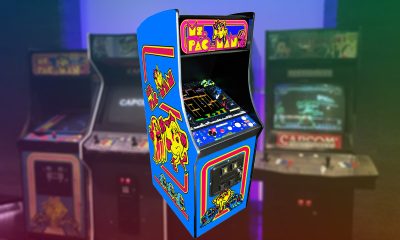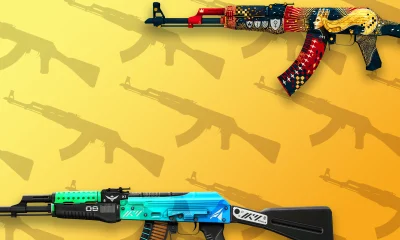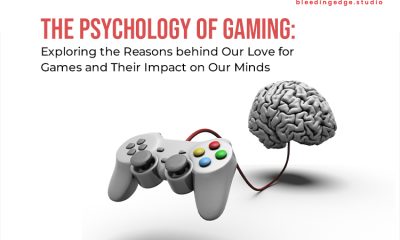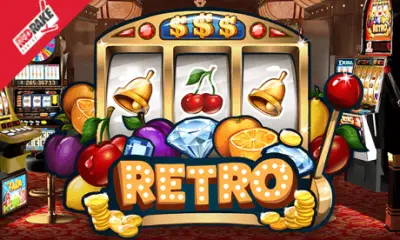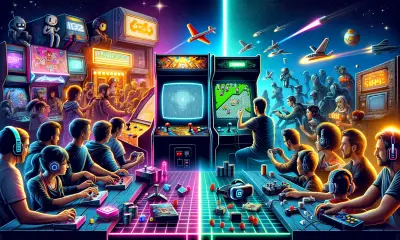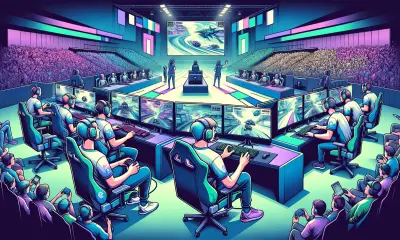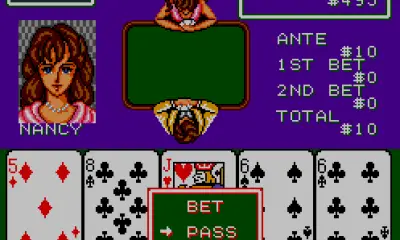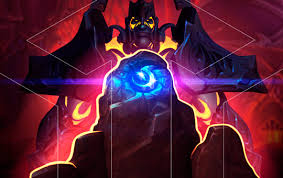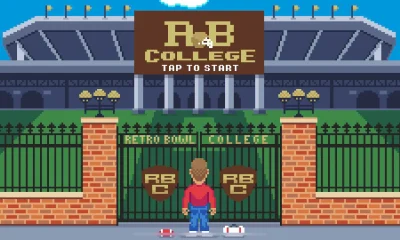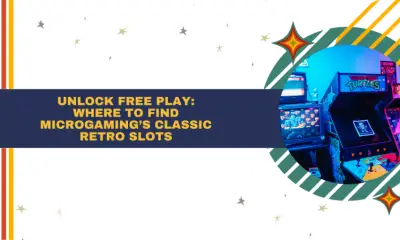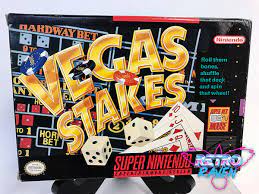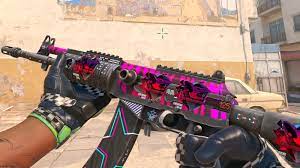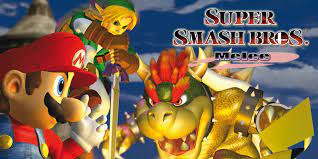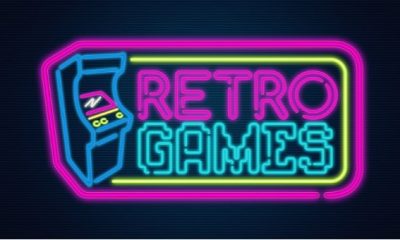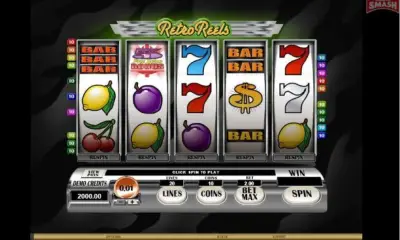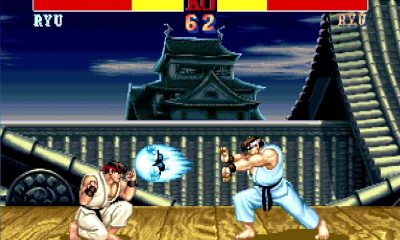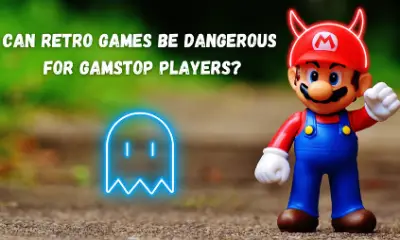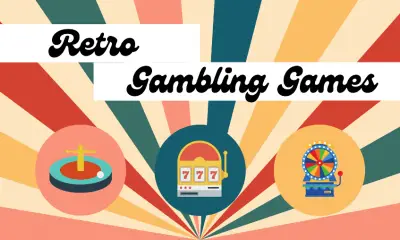The journey from the humble beginnings of 8-bit gaming to the adrenaline-fueled world of CS:GO case battles is evidence of the gaming industry’s persistent development. Early video games, with their pixelated graphics and simple mechanics, laid the foundation for interactive entertainment as it is known today. Titles like Pong and Space Invaders introduced gameplay elements centered around competition, a principle that continues to thrive in modern gaming.
These rudimentary games set a precedent for participant engagement through high-score systems and unlockable rewards. Although the graphics and soundtracks were rudimentary, the focus on achievement and rivalry enchanted audiences. This focus has remained central to modern gamers; for example, seeking to play CSGO case battle games for digital prizes such as skins replicate the thrill of earning something unique, albeit on a far grander scale.

Collecting and Competition in the Arcade Era
The arcade era amplified the competitive characteristics of gaming; machines lined the walls of arcades and players gathered to compete for bragging rights or to claim a spot on the coveted leaderboard. Collecting points became synonymous with status—a trend mirrored decades later in the virtual goods market of games like CS:GO. During this period, gaming wasn’t just about finishing a level or completing a quest—it was about leaving a personal mark and proving dominance within a community.
Arcade games also introduced the concept of chance-based rewards; games like Pac-Man or Donkey Kong would occasionally provide bonus items or point opportunities, bringing an element of unpredictability to the occasion. This randomization added intrigue and kept players returning for more. Fast forward to 2025 and this element of chance forms the backbone of case battles in CS:GO, where players open virtual cases to obtain rare items.
The Rise of Virtual Economies
The late 1990s and early 2000s saw gaming transition from physical consoles to online platforms, bringing new opportunities for in-game economies. Games such as Diablo II introduced item trading systems where players could barter for rare weapons or armor. Meanwhile, massively multiplayer online games (MMOs) like World of Warcraft expanded on this concept with auction houses and complex virtual economies.
These systems foreshadowed the economic framework of CS:GO’s case battles. The introduction of Steam’s Marketplace allowed players to trade, sell and purchase virtual items, turning in-game cosmetics into commodities with real-world value. This marked a consequential transition in gaming culture, where items became more than just status symbols; they transformed into assets with tangible worth. The precedent set by earlier virtual economies made it possible for CS:GO’s case battles to flourish in an environment already familiar with digital trade.
Loot Boxes and the Element of Chance
The introduction of loot boxes in games like Team Fortress 2 and Overwatch established the framework for case opening mechanics. These systems offered players the chance to purchase randomized items, often with varying levels of rarity. This innovation brought a sense of suspense and excitement to acquiring in-game items, similar to opening a pack of trading cards.
CS:GO’s case battles elevate this concept by incorporating a competitive twist; instead of simply opening a case to reveal its contents, players can engage in battles against others, where the value of the items obtained determines the winner. This amalgamation of luck and strategy has its roots in the unpredictability of early arcade games and the thrill of earning high-value rewards. The evolution of loot boxes set the scene for case battles to become a high-stakes activity, harmonizing chance with the competitive spirit of gaming’s early days.
The Psychology of Reward Systems
The success of CS:GO case battles can also be traced to the psychological principles established in retro gaming. Early games relied on intermittent reinforcement, where players received rewards at unpredictable intervals to keep them engaged. This approach is mirrored in modern case opening mechanics, where the anticipation of unlocking a rare item keeps players invested.
The thrill of receiving a valuable item triggers a dopamine release, constructing a feedback loop that encourages continued participation. Where early games provided small-scale rewards like extra lives or bonus points, modern systems amplify this experience by attaching real-world value to virtual items. This psychological hook maintains the excitement of CS:GO case battles, rendering them as compelling as the high-score chases of the arcade era.
Community Engagement and Social Dynamics
Gaming has always been a social activity, spanning from local multiplayer sessions on early consoles to the bustling backdrops of arcades. The advent of online gaming expanded these social dynamics, helping players connect with others worldwide. CS:GO case battles leverage this sense of community by allowing them to compete against each other, share their winnings and broadcast their experiences through platforms like Twitch.
This communal aspect finds its roots in retro gaming’s emphasis on shared ventures; whether gathering around an arcade machine or competing for the top score, the social connections formed through gaming have always been integral to its appeal. Modern case battles build on this tradition by facilitating interaction and rivalry, assembling a notion of belonging within the gaming community.
The Intersection of Nostalgia and Innovation
The charm of CS:GO case battles resides in their capacity to combine nostalgia with cutting-edge technology. The elements of competition, chance and reward that defined retro gaming are reimagined in a contemporary context, offering a familiar yet fresh experience. High-definition graphics, sophisticated algorithms and online connectivity bring these classic principles into the modern era, appealing to stalwart gamers and newcomers equally.
This blend of old and new highlights the enduring relevance of gaming’s foundational concepts. While technology has transformed the medium, the core aspects of engagement and excitement remain unchanged. CS:GO case battles exemplify this intersection, proving that even in a digital age, the essence of gaming’s roots continues to resonate.

- Retro Mechanics That Power Modern Bonus Games
- How retro gaming shapes modern online platforms
- What Makes Real Money Online Casinos Appealing to Players?
- From Arcade Cabinets to Browser Tabs: How Retro Gaming Went Digital
- From Arcades to Apps: Decades of Gaming Culture
- On-Chain Game Design: What Web3 Actually Adds to Core Gameplay
- The Revival of Retro Games – The Best Setup for the Real Feel
- How Developers Make Money from Free-To-Play Games
- How Retro Level Design Explains Modern Jackpot Lobby Themes and Player Navigation
- What Features Players Look for the Most in Retro Online Casino Games
- The Journey of Arcade Games into Blockchain Slots
- When Classic Design Meets Modern Tech: How Old-School Games Inspire Today’s Live Platforms
- Retro Slot Games: Still a Good Bet?
- The State of Casino Gaming on the Nintendo Switch in 2025
- 5G and Retro Multiplayer: Revamping Classic NES Games for Online Mobile Battles
- Low-Power Tech for Mobile Gaming
- From Retro Casino Games to the Online Experience
- Retro casino games: a complete guide
- How Different Industries Are Using Techniques From Gaming to Attract and Retain Customers
- The Enduring Appeal of Retro-Style Games
- Level Up Your Gaming: How to Maximize Bonuses for Retro and Online Casino Fans (2025 Guide)
- Megaways vs. Retro Slots: Which Are Better?
- Treasure In Your Attic? The Most Sought-After Retro Games
- Reliving the Golden Era of Gaming with PlayRetroGames.com
- Remembering some of the worst retro games ever made
- Top Picks: The Best Retro Games to Play Online
- Rediscover the Magic: Retro Games Unleashed!
- From 8-Bit to High Stakes: The Retro Gaming Roots of CS:GO Case Battles
- The Best Retro Themed NFL Video Games
- 12 of the Most Influential Chinese-Themed Retro Games
- The Role of Sound and Graphics in Online Casino Games
- The Enduring Appeal of Classic Table Games in Online Gaming
- Why Super Puzzle Fighter Was a Precursor to the Age of Casual iGaming
- Top Online Casino Providers: A New Era in Gambling
- The Evolution of Fast Payouts in Gaming: From Retro Classics to Modern Platforms
- A nostalgic revolution among retro gamers: Migrating to the thrills of online casinos
- The Increasing Role of Apps in Online Gaming
- How Retro Games Are Evolving to Match A More Mobile Gaming Industry
- Retro Game Elements in Today’s Online Casino World
- Hidden Levels and Easter Eggs in Retro Games
- The History Of Gambling In Asia
- Retro Video Game Mechanics in Casino Games
- Most Popular AK-47 Skins in CS2 and Their Prices
- The Psychology Behind Online Gambling: Why We Keep Coming Back
- Casual vs. Risky Plays: Balancing Fun with Crash Games and Retro Slots
- From 80s Arcades to Online Casinos: How Retro Video Games Inspired Modern Casino Games
- Why Poker Has Stood the Test of Time
- Tower.bet Loyalty Program: How to Earn Extra Bonuses
- What is the appeal of playing retro games?
- How Live Streaming is Revolutionizing Sports Betting
























